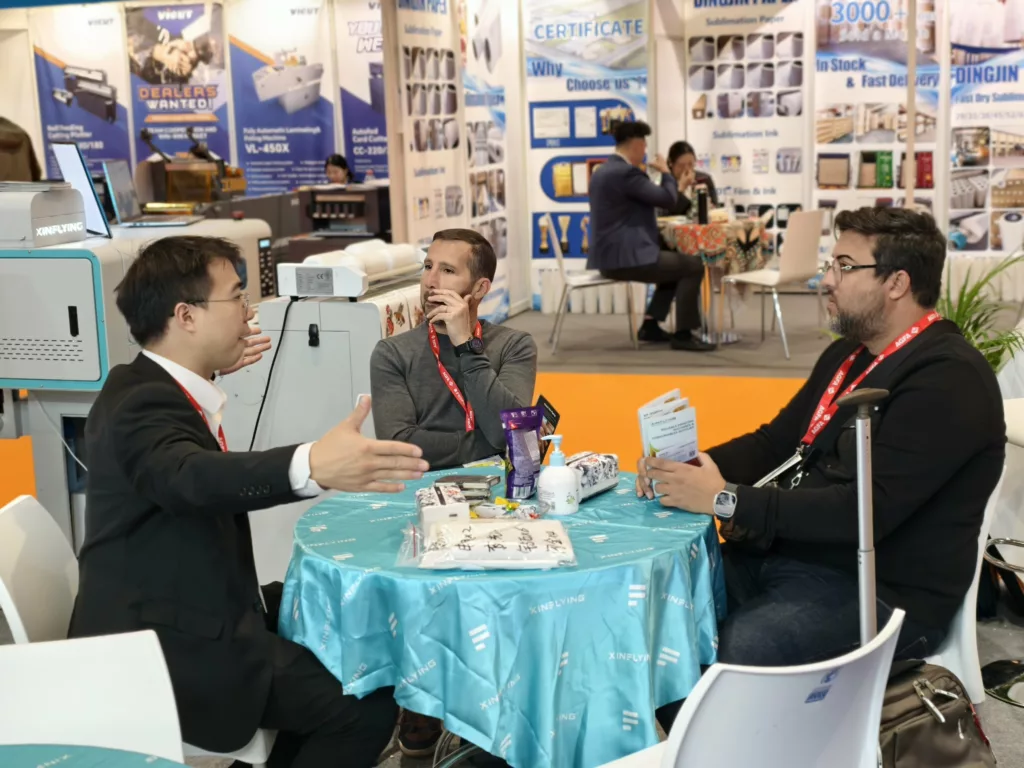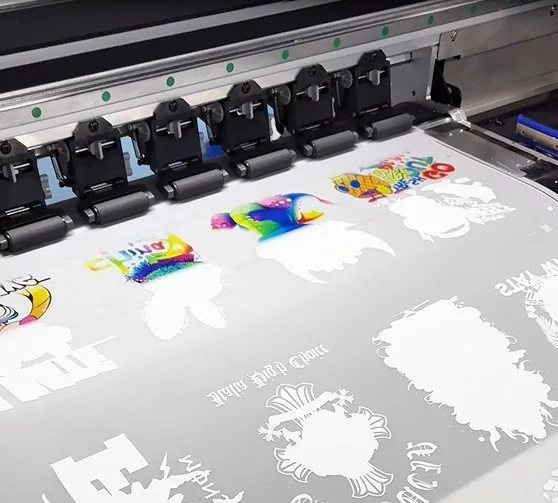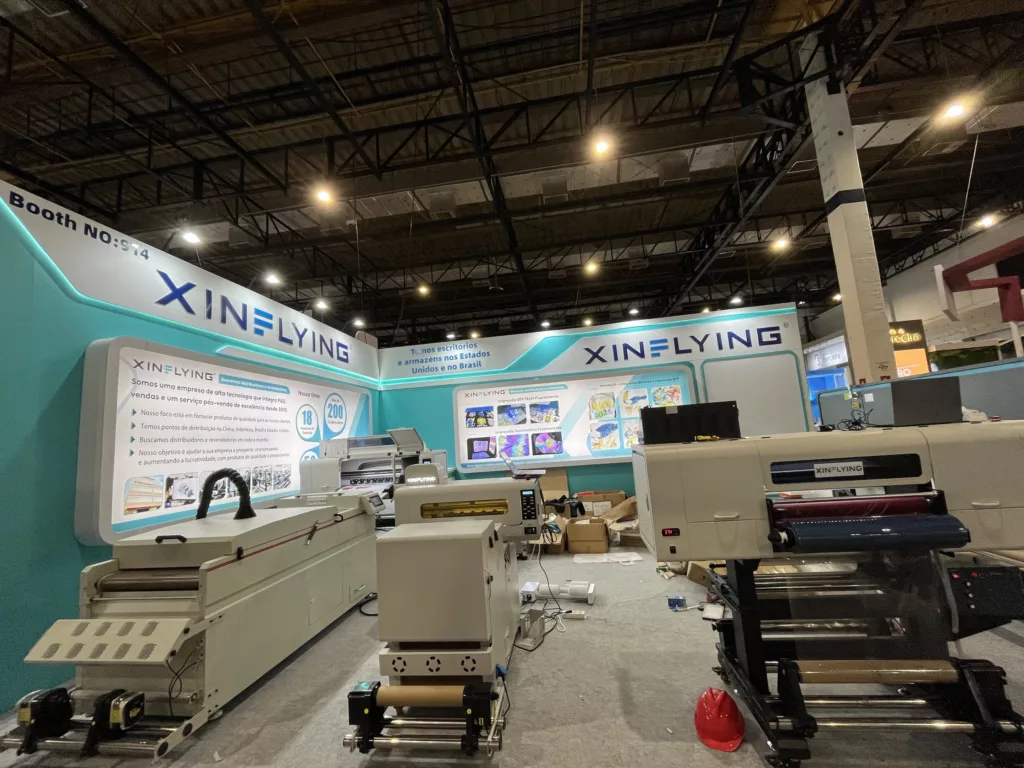फैब्रिक प्रिंटिंग ने हाल के वर्षों में लोकप्रियता में वृद्धि देखी है, अधिक से अधिक व्यक्ति अपने वस्त्रों में एक व्यक्तिगत स्पर्श जोड़ना चाहते हैं. कपड़े के प्रिंटर के आगमन के साथ, प्रक्रिया पहले से कहीं अधिक सुलभ और सुविधाजनक हो गई है. इस व्यापक गाइड में, हम फैब्रिक प्रिंटिंग के दायरे में गहराई तक पहुंचेंगे, इसकी तकनीकों को उजागर करना और इसके कई लाभों को उजागर करना. चाहे आप एक अनुभवी कलाकार हों या सिर्फ अपनी रचनात्मक यात्रा शुरू कर रहे हों, यह मार्गदर्शिका आपको अपनी रचनात्मकता को उजागर करने और विस्मयकारी कपड़े के प्रिंट का उत्पादन करने के लिए सभी आवश्यक जानकारी प्रदान करने के लिए डिज़ाइन की गई है.
फैब्रिक प्रिंटिंग क्या है?
फैब्रिक प्रिंटिंग विशेष मुद्रण तकनीकों का उपयोग करके कपड़े पर डिजाइन या पैटर्न को स्थानांतरित करने की प्रक्रिया है. इसमें पिगमेंट लागू करना शामिल है, रंगों, या जीवंत और विस्तृत डिजाइन बनाने के लिए कपड़े की सतह पर स्याही. फैब्रिक प्रिंटिंग जटिल कलाकृति के लिए अनुमति देता है, अंतहीन रंग संभावनाएं, और कपड़े पर डिजाइन की सटीक स्थिति.
कपड़े की छपाई के प्रकार
इससे पहले कि हम कपड़े की छपाई की पेचीदगियों में गोता लगाएँ, इस कला के रूप के बहुत सार को समझना महत्वपूर्ण है. इसके मूल में, फैब्रिक प्रिंटिंग में कपड़े पर डिज़ाइन ट्रांसफर करना शामिल है, अद्वितीय पैटर्न और दृश्य बनाना. फैब्रिक प्रिंटिंग में विभिन्न तरीके और फैब्रिक प्रिंटर का उपयोग किया जाता है, प्रत्येक अपनी विशिष्ट विशेषताओं के साथ.
स्क्रीन प्रिंटिंग
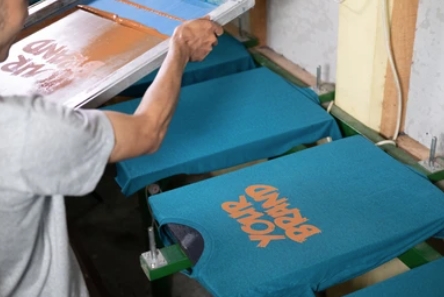
स्क्रीन प्रिंटिंग, रेशम स्क्रीनिंग के रूप में भी जाना जाता है, कपड़े की छपाई के सबसे पुराने और सबसे पारंपरिक तरीकों में से एक है. इसमें मेष स्टेंसिल का उपयोग शामिल है, अनिवार्य रूप से एक स्क्रीन, जिसके माध्यम से स्याही को वांछित डिजाइन बनाने के लिए कपड़े पर दबाया जाता है.
गर्मी अंतरण मुद्रण
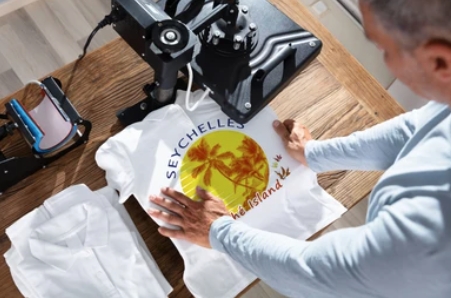
हीट ट्रांसफर प्रिंटिंग कपड़े पर डिज़ाइन ट्रांसफर करने के लिए गर्मी को रोजगार देता है. इस प्रक्रिया में, ट्रांसफर पेपर पर एक विशेष स्याही मुद्रित होती है और फिर गर्मी का उपयोग करके कपड़े पर स्थानांतरित कर दी जाती है, ज्वलंत और लंबे समय तक चलने वाले प्रिंटों के परिणामस्वरूप.
अंकीय कपड़ा मुद्रण
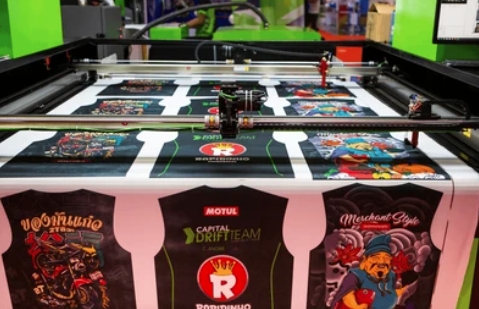
अंकीय कपड़ा मुद्रण, वहीं दूसरी ओर, एक अपेक्षाकृत आधुनिक और कुशल तकनीक है जो कपड़े पर डिजाइनों को प्रिंट करने के लिए डिजिटल तकनीक का उपयोग करती है. इस तरह का कपड़ा प्रिंटर सटीकता में वृद्धि की पेशकश करता है, FLEXIBILITY, और जटिल विवरणों को सहजता से पुन: पेश करने की क्षमता, जैसे कि वाइड-फॉर्मेट परबलिनेशन प्रिंटर और सीधा ग्रामेंट प्रिंटर पर. यह फैब्रिक प्रिंटिंग और सबसे अधिक अनुशंसित टेक्सटाइल प्रिंटिंग तकनीकों का भविष्य रहा है.
| तरीका | स्क्रीन प्रिंटिंग | गर्मी अंतरण मुद्रण | अंकीय कपड़ा मुद्रण |
| प्रक्रिया | डिजाइन प्रिंट करने के लिए स्टेंसिल और स्क्रीन का उपयोग करता है. | डिजाइन को लागू करने के लिए गर्मी और दबाव का उपयोग करता है. | डिज़ाइन बनाने और प्रिंट करने के लिए कंप्यूटर सॉफ़्टवेयर का उपयोग करता है. |
| लागत | बड़े रनों के लिए लागत प्रभावी हो सकता है. | छोटे रन के लिए लागत प्रभावी हो सकता है. | लागत अधिक हो सकती है लेकिन पूर्ण अनुकूलन के लिए अनुमति देता है. |
| बहुमुखी प्रतिभा | सपाट सतहों तक सीमित. | विभिन्न प्रकार की सामग्रियों और आकृतियों पर लागू किया जा सकता है. | विभिन्न प्रकार की सामग्रियों पर लागू किया जा सकता है. |
| सहनशीलता | उच्च स्थायित्व, डिजाइन बार -बार धोने का सामना कर सकता है. | विधि के आधार पर भिन्न होता है (विनाइल उदात्तता से अधिक समय तक रहता है). | उच्च स्थायित्व यदि उचित पोस्ट-प्रोसेसिंग लागू किया जाता है. |
| रफ़्तार | गति के कारण बड़े पैमाने पर उत्पादन के लिए आदर्श. | अन्य तरीकों की तुलना में धीमा. | डिजाइन जटिलता के आधार पर भिन्न होता है, आमतौर पर स्क्रीन प्रिंटिंग की तुलना में धीमी गति से. |
| विवरण | स्क्रीन जाल के कारण महीन विवरण याद कर सकते हैं. | गर्मी और दबाव के कारण ठीक विवरण याद कर सकते हैं. | डिजिटल फ़ाइलों से सीधे प्रिंट होने के बाद से बहुत जटिल विवरणों को कैप्चर कर सकते हैं. |
| पर्यावरण | उपयोग किए गए स्याही के आधार पर मजबूत रसायनों को शामिल किया जा सकता है. | हीट ट्रांसफर बहुत अधिक ऊर्जा का उपयोग कर सकता है और इसमें विनाइल शामिल हो सकता है जो बायोडिग्रेडेबल नहीं है. | पानी-आधारित स्याही का उपयोग करता है जो पर्यावरण के लिए कम हानिकारक हैं. |
में कपड़े की छपाई के साथ शुरुआत कर रही है 4 सरल चरण
प्राप्त करना फैब्रिक प्रिंटर कपड़े की छपाई की रोमांचक दुनिया में आपका पहला कदम है. विश्वसनीय डिजिटल टेक्सटाइल प्रिंटर निर्माताओं को ढूंढना महत्वपूर्ण है, और सुविधाओं को समझें, विशेष विवरण, और बाजार में उपलब्ध विभिन्न कपड़े प्रिंटर की संगतता. अगला, आपको सामग्री की आवश्यकता होगी कपड़ा, आईएनके, गर्म प्रेस, और मुद्रण सॉफ्टवेयर. याद करना, एक संगठित कार्यक्षेत्र आपके रचनात्मक आउटपुट को बढ़ाता है.
अपने प्रिंट डिजाइन करना
फैब्रिक प्रिंटिंग आपकी रचनात्मकता को उजागर करने के लिए एक आदर्श मार्ग है. प्रेरणा कहीं से भी आ सकती है, यह प्रकृति हो, वास्तुकला, या यहां तक कि कविता का एक सुंदर टुकड़ा. विभिन्न डिजाइन तकनीकों के बारे में सीखना और डिजिटल डिजाइन बनाने से शानदार परिणाम हो सकते हैं. एक अच्छी तरह से तैयार डिजाइन एक गुणवत्ता प्रिंट सुनिश्चित करता है.
मुद्रण के लिए अपने कपड़े तैयार करना
अपने कपड़े की रचना को समझना महत्वपूर्ण है. कुछ कपड़े दूसरों की तुलना में मुद्रण के लिए बेहतर प्रतिक्रिया देते हैं, आपको धोने और उन्हें सही तरीके से तैयार करने की आवश्यकता है. अपने कपड़े का बहाना अंतिम आउटपुट में एक महत्वपूर्ण अंतर बना सकता है. उचित तरीकों का उपयोग करना दीर्घायु और प्रिंट गुणवत्ता की गारंटी देगा.
कपड़े पर छपाई
अब मज़े वाला हिस्सा आया, मुद्रण. हालांकि यह पहली बार में तंत्रिका-विनाश हो सकता है, चरण-दर-चरण निर्देशों के बाद आपको एक आदर्श प्रिंट देना चाहिए. समस्या निवारण प्रिंट मुद्दों के लिए धैर्य की आवश्यकता होती है. तथापि, अभ्यास के साथ, आप सीखेंगे कि अधिकतम जीवंतता और रंग सटीकता कैसे सुनिश्चित करें.
मुद्रित कपड़ों के लिए परिष्करण और देखभाल
पोस्ट-प्रिंटिंग उपचार आपके फैब्रिक प्रिंट के लुक को बढ़ाते हैं, और उनके जीवनकाल में भी योगदान कर सकते हैं. अपने प्रिंट को वॉश-प्रतिरोधी बनाने के लिए अपने प्रिंट को सुखाने और गर्मी-सेटिंग महत्वपूर्ण है. याद करना, हैंडलिंग और स्टोरिंग में थोड़ी देखभाल आपके मुद्रित कपड़ों की सुंदरता को लंबे समय तक संरक्षित कर सकती है.
कपड़े की छपाई के अनुप्रयोगों की खोज

फैब्रिक प्रिंटिंग टेक्नोलॉजी ने विभिन्न टेक्सटाइल सतहों पर अपनी रचनात्मकता और डिजाइन को व्यक्त करने के तरीके में क्रांति ला दी है. चाहे आप एक फैशन डिजाइनर हों, आंतरिक सज्जकार, उपदेश, या किसी ने शिल्प के बारे में भावुक किया, फैब्रिक प्रिंटिंग संभावनाओं की दुनिया खोलती है. इस खंड में, हम फैब्रिक प्रिंटिंग के विभिन्न अनुप्रयोगों में गोता लगाएंगे और यह कैसे ब्याज के विभिन्न क्षेत्रों को बढ़ा सकता है.
फैशन और परिधान डिजाइन
फैशन प्रिंटिंग फैशन और परिधान डिजाइन के दायरे में एक अपरिहार्य उपकरण बन गया है. यह डिजाइनरों को जीवंत स्थानांतरित करके अपने अद्वितीय दृश्य को जीवन में लाने में सक्षम बनाता है, कपड़ों पर विस्तृत पैटर्न. एक कपड़े प्रिंटर के साथ, डिजाइनर विभिन्न कपड़ा सामग्री के साथ प्रयोग कर सकते हैं कपास, रेशम, या यहां तक कि सिंथेटिक मिश्रण, कपड़ों की शैलियों और वरीयताओं की एक विस्तृत श्रृंखला के लिए खानपान. एक-एक तरह के कपड़ों को बनाने से लेकर सामान पर जटिल पैटर्न छापने तक, फैब्रिक प्रिंटिंग डिजाइनरों को अपनी रचनात्मकता को उजागर करने और ग्राहकों को वास्तव में असाधारण कुछ प्रदान करने की अनुमति देता है.
घर की सजावट और इंटीरियर डिजाइन
कपड़े की छपाई घर की सजावट और इंटीरियर डिजाइन की दुनिया पर एक महत्वपूर्ण प्रभाव डालती है. कपड़ों पर कस्टम डिजाइन प्रिंट करने की क्षमता के साथ, डेकोरेटर अद्वितीय पर्दे बना सकते हैं, असबाबवाला फर्नीचर, या यहां तक कि व्यक्तिगत बिस्तर भी. फैब्रिक प्रिंटिंग घर के मालिकों को अपने रहने वाले स्थानों में अपने व्यक्तिगत स्पर्श को सहजता से जोड़ने की अनुमति देती है. यह सामंजस्यपूर्ण बनाने के लिए रास्ते खोलता है, नेत्रहीन आकर्षक अंदरूनी जहां कोई वास्तव में अपनी शैली और व्यक्तित्व को व्यक्त कर सकता है.
रजाई और कपड़ा कला
क्विल्टिंग और टेक्सटाइल आर्ट के शौकीनों ने भी अपने रचनात्मक प्रयासों के लिए कपड़े की छपाई को अपनाया है. पारंपरिक रजाई में सुंदर बनाने के लिए विभिन्न कपड़े के पैच एक साथ सिलाई करना शामिल है, जटिल डिजाइन. फैब्रिक प्रिंटिंग को शामिल करके, क्विल्टर अपनी कला को अगले स्तर तक ले जा सकते हैं. वे जटिल पैटर्न प्रिंट कर सकते हैं, इमेजिस, या कपड़े पर व्यक्तिगत तस्वीरें भी, उनकी रजाई कृतियों में एक कस्टम स्पर्श जोड़ना. फैब्रिक प्रिंटिंग कलाकारों को कपड़ा डिजाइन और रंगों की एक विस्तृत श्रृंखला के साथ प्रयोग करने में सक्षम बनाता है, क्विल्टिंग और टेक्सटाइल आर्ट की दुनिया में अंतहीन संभावनाओं के लिए अनुमति.
अनुकूलित उपहार और शिल्प
फैब्रिक प्रिंटिंग व्यक्तिगत उपहार और शिल्प बनाने के लिए अंतहीन अवसर प्रदान करता है. चाहे वह एक अनुकूलित टोट बैग हो, व्यक्तिगत रसोई एप्रन, या एक अद्वितीय कपड़े की दीवार कला टुकड़ा, फैब्रिक प्रिंटिंग व्यक्तियों को सार्थक बनाने की अनुमति देता है, एक-एक तरह के आइटम. तस्वीरें मुद्रित करके, उद्धरण, या कपड़े पर डिजाइन, लोग अपने उपहारों को एक व्यक्तिगत स्पर्श दे सकते हैं जो उनके प्रियजनों द्वारा पोषित किया जाएगा. इसके अतिरिक्त, फैब्रिक प्रिंटिंग अद्वितीय वस्तुओं को तैयार करने के लिए संभावनाएं खोलती है, जैसे कपड़े के गहने, भरवां खिलौने, या सजावटी तकिए, व्यक्तियों को अपनी रचनात्मकता का पता लगाने और हस्तनिर्मित खजाने बनाने की अनुमति देता है.
कपड़े की छपाई में सफलता के लिए टिप्स
फैब्रिक प्रिंटिंग एक पुरस्कृत और रचनात्मक शिल्प हो सकती है, आपको विभिन्न कपड़ों पर अपने अनूठे डिजाइनों को जीवन में लाने की अनुमति देता है. तथापि, किसी भी रचनात्मक प्रयास की तरह, यह चुनौतियों के अपने उचित हिस्से के साथ आ सकता है. इस खंड में, हम कपड़े की छपाई में सामान्य चुनौतियों को दूर करने और अपने कौशल के विस्तार पर मार्गदर्शन प्रदान करने के लिए कुछ मूल्यवान युक्तियों का पता लगाएंगे, अपनी शैली का विकास करना, और अपने कपड़े प्रिंट को बढ़ावा देना.
ठीक से अपने कपड़े तैयार करें
मुद्रण से पहले, सुनिश्चित करें कि आपका कपड़ा साफ है, सूखा, और किसी भी झुर्रियों या क्रीज से मुक्त. यह चिकनी और यहां तक कि मुद्रण परिणाम भी सुनिश्चित करेगा.
अपने कपड़े और प्रिंटर सेटिंग्स का परीक्षण करें
अपने प्रिंटर के लिए सबसे अच्छी सेटिंग्स निर्धारित करने के लिए विभिन्न कपड़ों के साथ प्रयोग करें. तापमान जैसे चर को समायोजित करना, स्याही घनत्व, और प्रिंट की गति अंतिम परिणाम को बहुत प्रभावित कर सकती है.
पता स्याही रक्तस्राव
रंगों को एक दूसरे में रक्तस्राव से रोकने के लिए, मुद्रण से पहले एक कपड़े प्राइमर या पूर्व-उपचार समाधान का उपयोग करें. यह कपड़े के तंतुओं का पालन करने में मदद करेगा, शार्पर और क्रिस्पर प्रिंट के परिणामस्वरूप.
निष्कर्ष
फैब्रिक प्रिंटिंग निस्संदेह एक रोमांचक और पुरस्कृत कला है. यह न केवल आप में कलाकार को उजागर करने में मदद करता है, लेकिन यह भी आपके रचनात्मक विचारों को जीवन में लाने के लिए असीम संभावनाएं प्रदान करता है. प्रक्रिया को गले लगाओ, खोजते रहो, और कुछ सुंदर बनाने की खुशी का आनंद लें. आपकी फैब्रिक प्रिंटिंग जर्नी अभी शुरू हुई है, और चमकीले रंगों की दुनिया, बनावट, और पैटर्न आपको इंतजार कर रहे हैं.




























